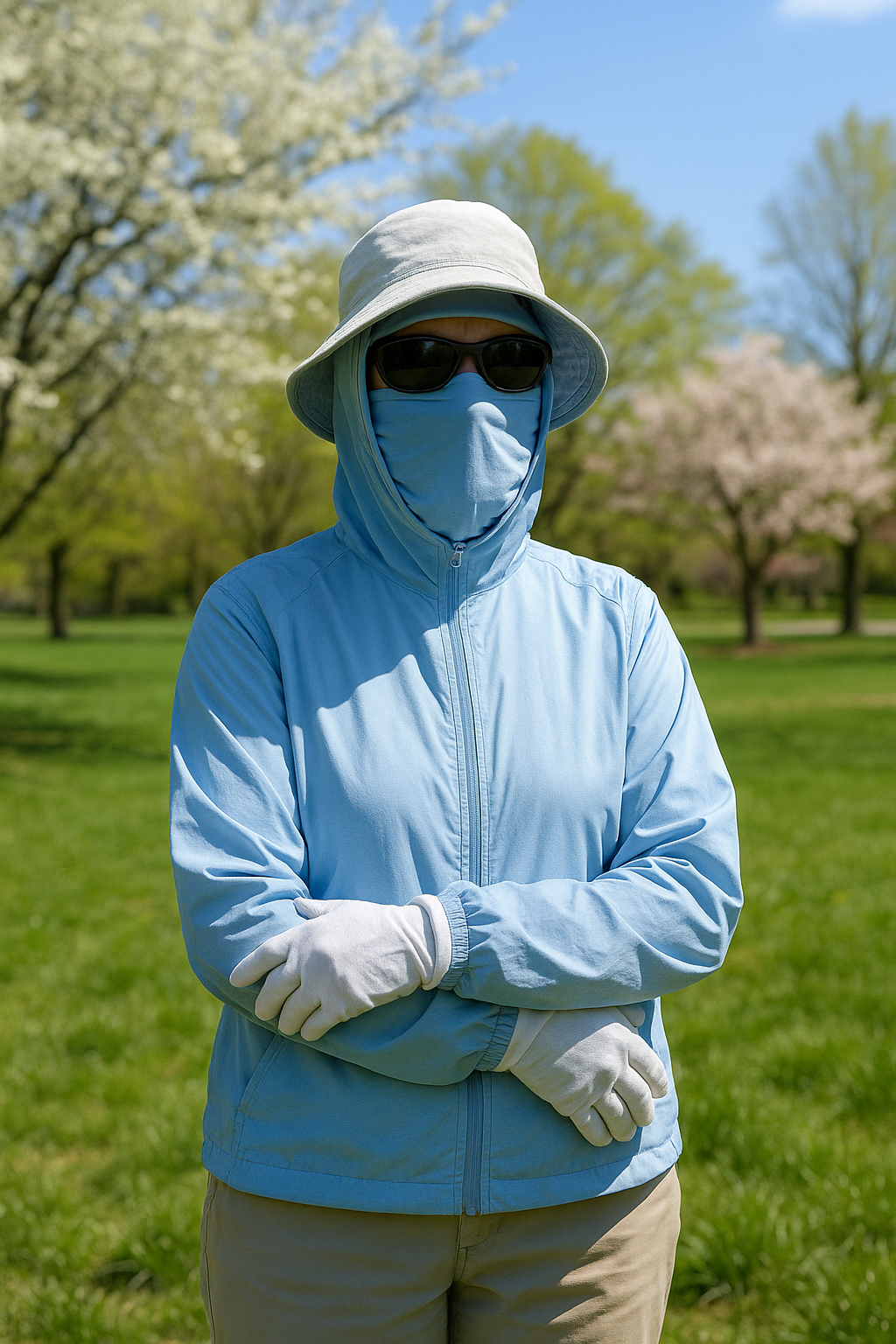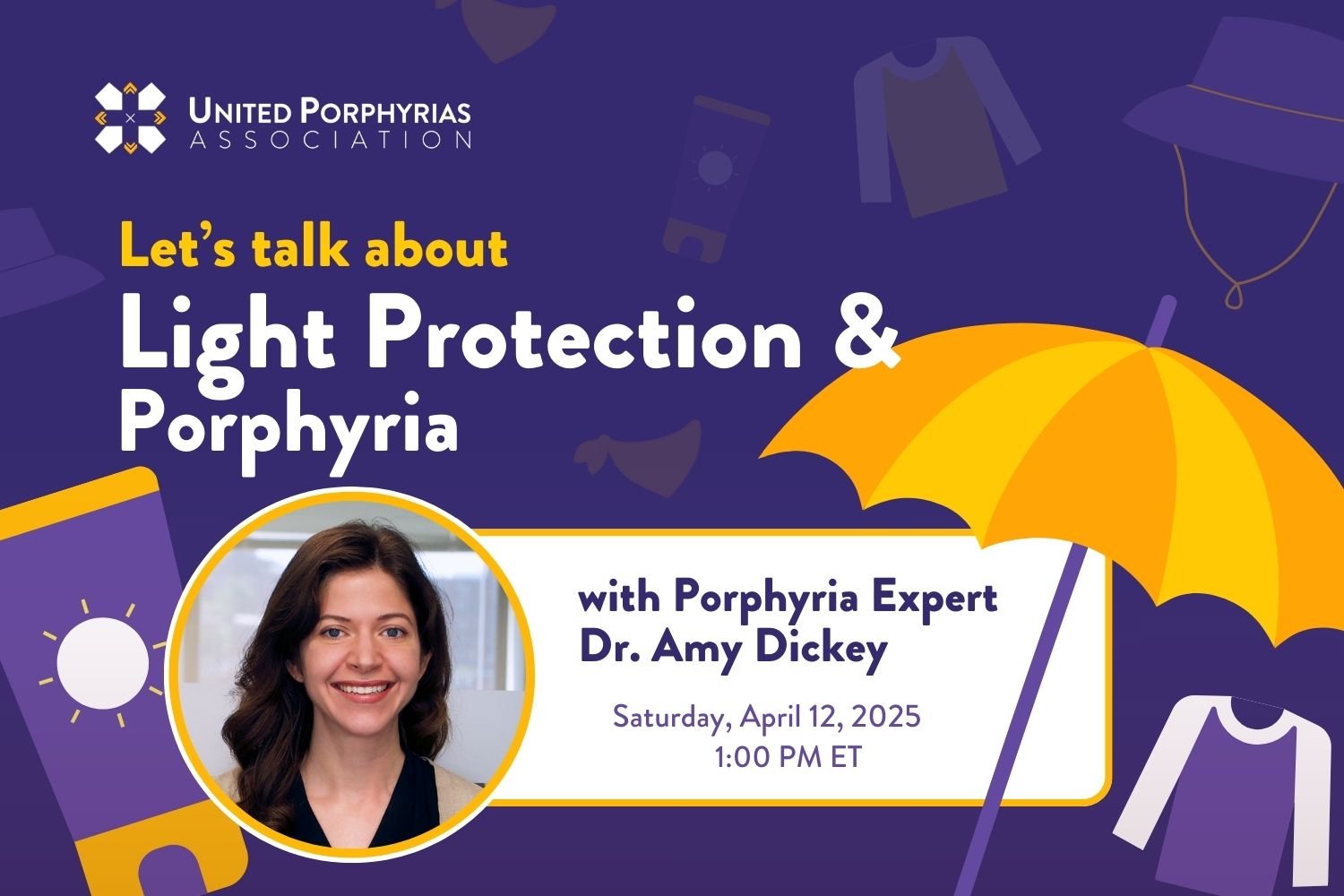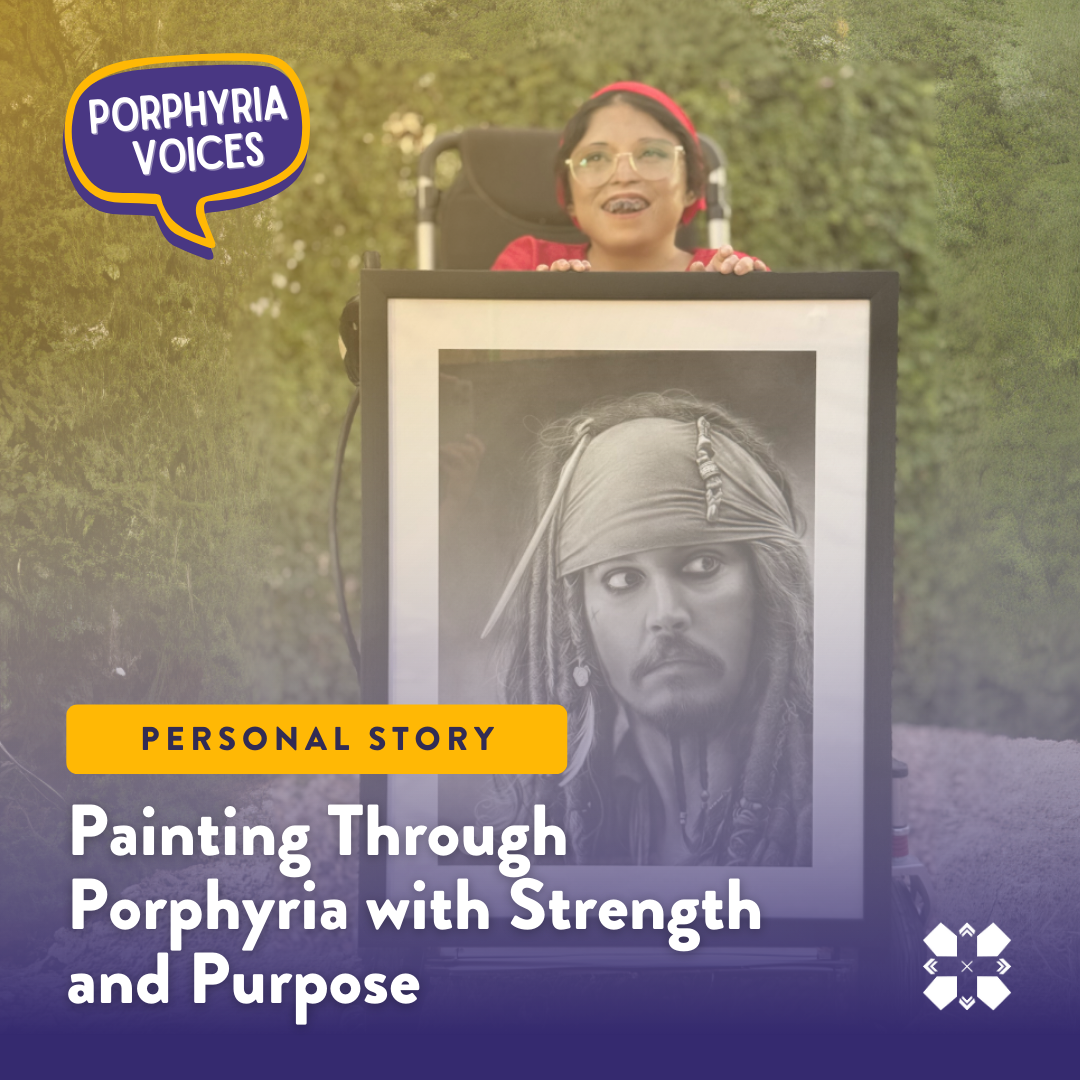Spring Sun Safety: Essential Sun Protection Tips for Cutaneous Porphyria Patients
Porphyria Voices shares experiences, insights, and advice from the porphyria community. Discover valuable knowledge, foster connections, and join us in raising awareness to empower and unite our porphyria family.
By Katrina Parra
With help from warriors in our porphyria community
For patients with cutaneous porphyrias—including Erythropoietic Protoporphyria (EPP), X-Linked Protoporphyria (XLP), Porphyria Cutanea Tarda (PCT), and Congenital Erythropoietic Porphyria (CEP), as well as acute hepatic porphyria with photosensitivty like Hereditary Coproporphyria (HCP) and Variegate Porphyria (VP) —spring brings longer days and stronger sunlight, which can trigger painful symptoms. Unlike typical sun sensitivity, porphyria-related photosensitivity can cause severe burning pain, blistering, and long-term skin damage even after minimal exposure.
To help you stay safe this season, we've compiled patient-tested, expert-approved protection strategies from our community.
“I love the Shadow rule. I have never heard of it and it’s a great visual tool for kids! I will definitely be sharing that tip.”
-Ginger Zona, EPP patient.
1. Know Your Light
Unlike typical sunburns and sun-related skin damage, porphyria reactions aren’t caused by UV light. Instead, it is light in the visible spectrum (especially blue light) that causes the photosensitive reactions in porphyria.
This means that not all sun-safety advice will be useful to prevent porphyria reactions. For example sunscreens are not intended to block visible light. Glass windows block UV light, but not visible light, meaning that care needs to be taken even when inside the car or at home if direct or reflected light is coming through the window.
2. Clothing: Your First Line of Defense
"Denim is my go-to for maximum protection," advises Candace, an EPP patient advocate.
Clothing is your best option for protecting from sunlight. There are several factors that impact how effective clothing is at blocking the sun:
Color: Dark or bright colors generally absorb more light than white or pastel colors.
Construction: The material, weave and texture of clothing will impact how much light will pass through. Look for dense, tightly woven materials. Synthetic fabrics like polyester or rayon, or densely woven natural materials like wool, denim or corduroy will block more light than fabrics like cotton or silk.
Fit: Looser clothing will let less light through (because the weave of the fabric isn’t being stretched) and will help you stay cooler.
Tips for selecting clothing:
Look for UPF 50+ fabrics. They block 98% of UV radiation and significant visible light
Use a flashlight or hold fabrics up to the light. According to Porphyria Expert, Dr. Amy Dickey, MD, MSC, "If light passes through easily, so will harmful wavelengths."
Don’t forget accessories. Gloves, wide-brimmed hats and umbrellas can prevent light from reaching skin!
3. Sunscreen May Help But Has Limitations
Sunscreens aren’t intended to block visible light, however some may reduce the amount of light reaching the skin:
Mineral sunscreens (contain zinc oxide or titanium dioxide) have particles that reflect/scatter light and may help reduce photosensitivity. The British Porphyria Association has published a guide to sunscreens to help identify effective brands.
While sunscreen may not help prevent reactions, wearing sunscreen is still important for general skin health.
Use the Shadow Rule for a quick check on sun strength.
4. Timing Matters: Avoiding Peak Sunlight Hours
The sun’s rays are strongest between 10 AM and 4 PM. However, morning and late afternoon sun can still be harmful.
Use the Shadow Rule: If your shadow is shorter than you, seek shade immediately.
Remember that visible light will still penetrate clouds and glass. Don’t forget about light sources that may not seem as strong such as reflections off of water or snow.
UV index apps (like EPA’s SunWise) can help track the strength of sunlight in real time.
5. Additional Protective Measures
Look into window tinting for cars. Victor (EPP patient) recommends ceramic car tints. They block a substantial amount of light without darkening your windows and without reducing visibility.
Wear gloves when driving.
Carry your shade: a UPF umbrella or pop-up canopies during outdoor activities can create shade.
“Protection is possible when we combine science with lived experience”
5. Find Support and Stay Informed
Living with porphyria can feel isolating, but you’re not alone. The UPA Connect-Up Program offers a network of support groups, patient mentors, and educational events to help you navigate daily life with porphyria. Connecting with others who understand your experience can make a meaningful difference in managing symptoms and emotional well-being.
UPA’s sister organization, Shadow Jumpers, provides supports to photosensitive children and their families including financial support, Sun Escape Weekend, and a clothing drive for sun protective clothing.
Scientific progress continues to bring hope for better treatments. Porphyria experts worldwide are working to advance therapies, improve diagnostics, and one day find a cure for the porphyrias. Staying informed about breakthroughs can empower you to make the best decisions for your care, check out UPA research opportunities to learn more about current opportunities.
Craig Leppert of Shadow Jumpers playing baseball with children living with cutaneous porphyrias at Sun Escape 2024.
Final Thoughts
Spring doesn’t have to mean staying indoors—strategic sun protection can help porphyria patients enjoy the season safely. By combining appropriate clothing, other protection strategies and smart timing, you can reduce reactions and protect your skin long-term.
Learn More
Check out the recording from a recent webinar with Dr. Amy Dickey and EPP patient Ginger on light protection and porphyria.
Katrina Parra is the Director of Community Engagement at the United Porphyrias Association. Living with Acute Intermittent Porphyria herself, Katrina is dedicated to raising awareness and providing support for those affected by rare diseases. Through her work, she strives to build strong connections within the porphyria community, sharing her personal experiences and empowering others to navigate their journey with strength and solidarity.
Have knowledge or experiences to share with Porphyria Voices?
Reach out and pitch your idea—we’d love to feature your unique perspective!












